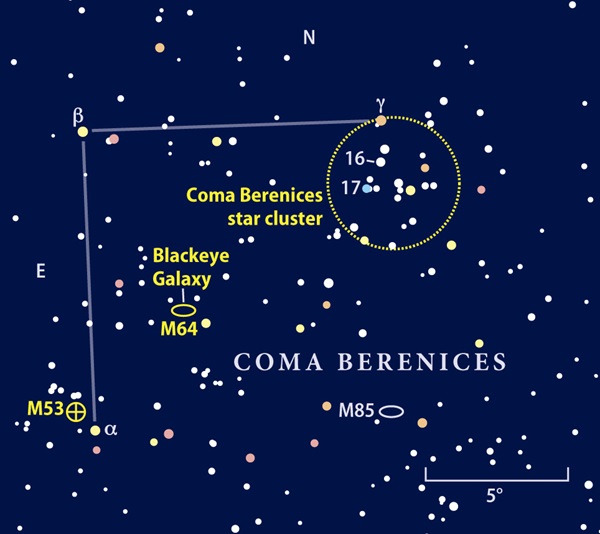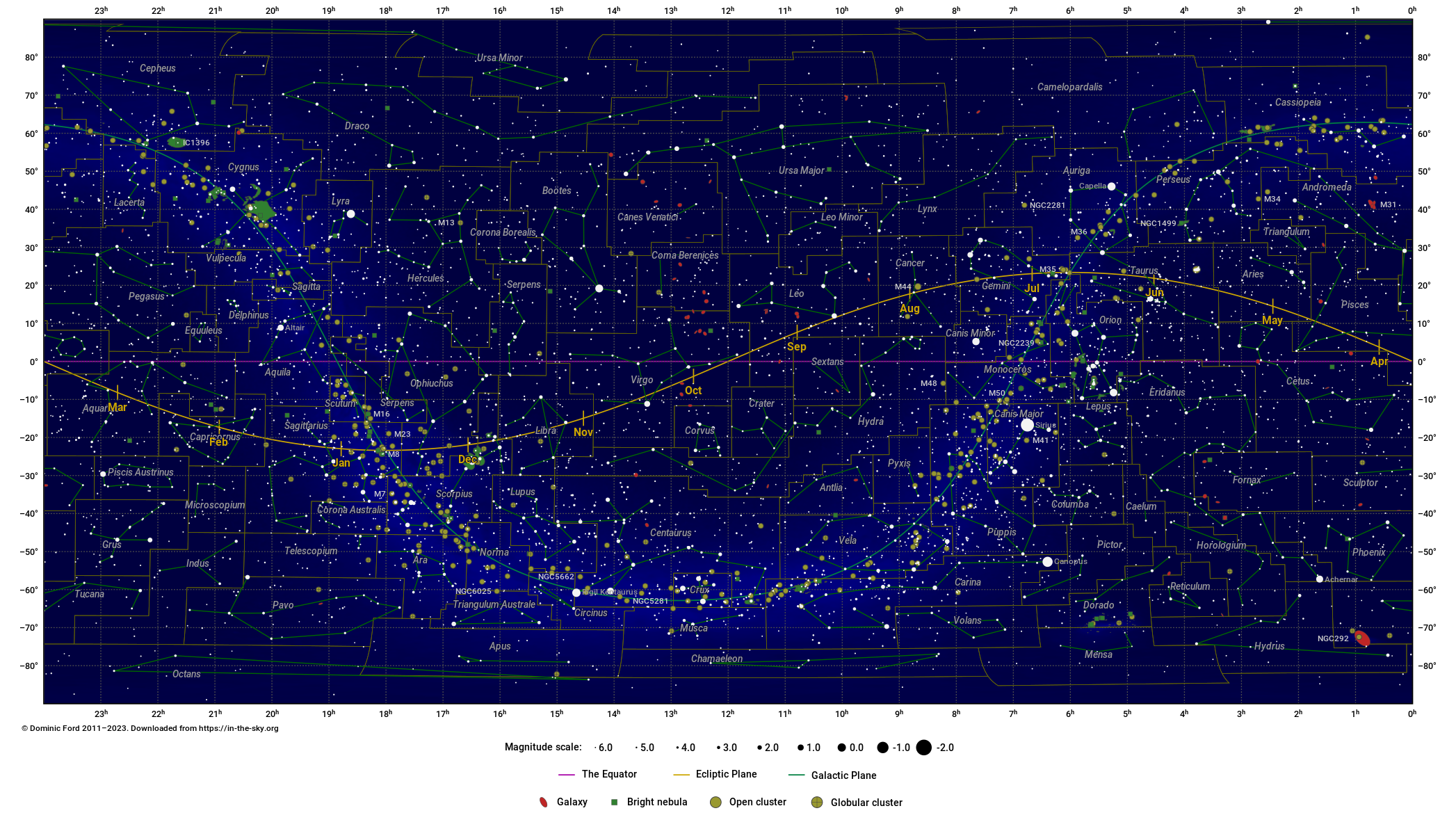Coma Cluster
Copyright © 2023 Henk Reints, http://henk-reints.nl
Fritz Zwicky had completely wrong numbers available, so he missed the point, and he presumed
it was either gravitationally held together (he applied the virial theorem) or flying apart.
On the other hand, I am using currently known numbers and I consider all cluster
members as moving only in the Hubble flow, with negligible gravitational interaction.
It appears to have a bar-like structure (see this image as well as this one).
The universe (absolutely certainly) is a 3-sphere (see this document, READ IT!) and objects near
a 3-spherical geodesic can appear quite far away from the 2-spherical geodesic as seen in the sky.
I analysed the 3-spherical geodetic extension of the cluster's main axis,
(script & source files, but without folder structure), yielding distanceToGeodesic-result.html.
Of all 3 263 556 usable Galaxies and Quasars I found in SIMBAD (as of 2023-02-19),
I found 45 158 within 100 Mly of this geodesic (excluding the Coma Cluster itself).
By far the biggest concentration thereof (6490 objects) is in the western part
of Fornax, close to Sculptor (near the yellow asterisk in the image below).
They are however not the Fornax Cluster, which is in the SE of Fornax.
The very most of them have a (3-S geodetic) distance
to the Coma Cluster's barycentre of 0.12 × DH on average
(total range roughly from 0.02 to 0.25, FWHM ≈ 0.10),
implying a bar of ~6200 objects on/near the very same geodesic as the Coma Cluster bar.
Did (very long ago) these objects and the Coma Cluster apply Newton's 3rd law?
Or is it some (geodetic) filament, merely stretched by cosmic expansion?
Are there more such alignments in the cosmos?


The Fornax and Coma clusters are roughly in opposite directions in the sky.
Coma Berenices is at RA:12h45m, dec:+22°.22, roughly in the centre of the sky map below. Fornax is at RA:02h46m, dec:-31°.22, to the south-west of Orion & and west of Eridanus, which partly surrounds it.

Constellation sky map copied from https://in-the-sky.org